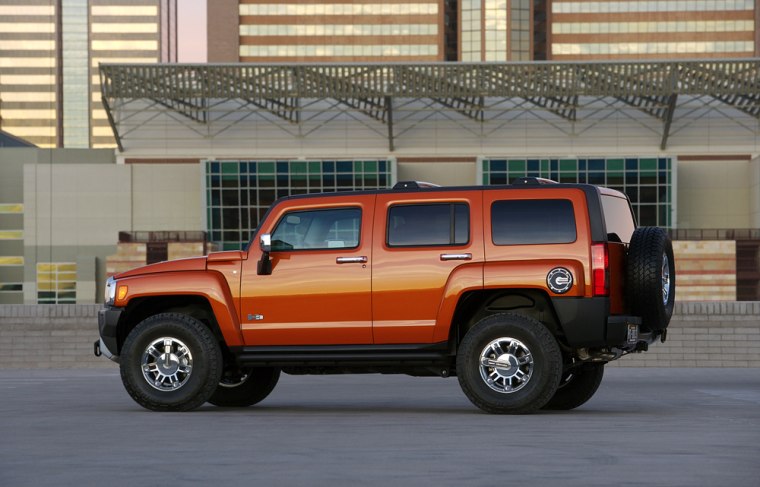The Hummer is a vehicle that stirs up a lot of opinions. Some admire its bold, muscular shape, while others simply see it as a gas-guzzling monster. But those gas-conscious car shoppers could be writing off the Hummer too soon, according to the latest J.D. Power and Associates’ 2007 Avoider Study.
The study, which examines the reasons consumers fail to consider particular models when shopping for a new vehicle, found that the Hummer H3 is the most-avoided model in its segment, with 21 percent of buyers saying they would not consider buying it because of its poor gas mileage. The survey was based on responses from more than 35,000 car owners who registered a new vehicle in May 2007.
“Just as people think of Toyotas and Hondas getting good gas mileage, they think of Dodges and Hummers getting poor fuel economy because they are larger vehicles, but that’s not always the case,” said Jon Osborn, research director at J.D. Power and Associates.
In fact, EPA fuel economy estimates for the H3 are very similar to those of other cars in the midsize SUV segment such as the Jeep Commander and Chrysler Aspen — two vehicles that have much lower avoidance rates in the J.D. Power study, Osborn noted.
Although 53 percent of survey respondents said they avoided buying the H3 because of their perceived poor gas mileage, EPA data show the H3’s fuel economy is comparable with the 2008 Jeep Commander and 2008 Chrysler Aspen, which both get 14 miles per gallon in the city and 19 on the highway. The 2008 Hummer H3 gets just a bit less at 14 mpg in the city and 18 on the highway.
“So when people are actively avoiding the Hummer it looks like that’s based on a prior image and a perception of what they know about the vehicle, and not the facts,” Osborn said.
Car shoppers hoping save a buck or two on gas can be forgiven for avoiding the Hummer. The H3 looks a lot like its supersized older brother, the H2, which measures 204 inches in length compared to the H3’s 187 inches. Both descend from the original H1, which was produced from 1992 through 2006 and was basically a military Humvee, or "High Mobility Multipurpose Wheeled Vehicle," adapted for civilian use.
General Motors does not provide fuel economy figures for larger H2 and H1 Hummers but they are almost certainly among the most inefficient vehicles on the road. According to reviewers who have tested the current H2 — which costs between $55,000 and $65,000 — it gets mileage in the high single digits or low double digits.
High gas prices and a trend away from large sport utility vehicles have hurt Hummer sales, which are down about 22 percent nationwide so far this year. Sales in November were down about 30 percent from November 2006.
Last year, Hummer launched a print, Web and television advertising campaign highlighting the fuel efficiency and cost of the H3, which has a starting price of around $30,000, lower than the Aspen and Commander, which are priced at $35,000 and 45,000, respectively.
A new ad campaign called “Hummer Heroes” aims to soften the brand’s image, showing the vehicle as a force for good, with owners and rescue workers describing how they helped others using their Hummers.
Osborn notes that unless GM can change consumers’ perceptions of the Hummer, the avoidance rate may continue to be a problem for the brand.
“The H3’s certainly not for everyone,” he said. “But GM needs to do a better job of getting the word out there that the gas mileage of this vehicle is on a par with others in the same segment.”
Still, perceptions of a vehicle can be stronger than the facts, according to Jon Ikeda, head of U.S. design at Honda’s Acura subsidiary. He says that often the way a vehicle looks is more important than its performance.
For example, many people who buy hybrid vehicles want to make a statement about their commitment to the environment, so they may be more likely to gravitate toward the distinctive styling of the Toyota Prius rather than a Honda Civic hybrid, which looks the same as the all-gasoline version. The two cars offer similar fuel economy and cost about the same.
Toyota clocked up sales of 16,737 gas-electric hybrid Prius sedans in November, an increase of 109 percent over the previous November, while Honda sold 3,238 hybrid Civics, up 47 percent.
